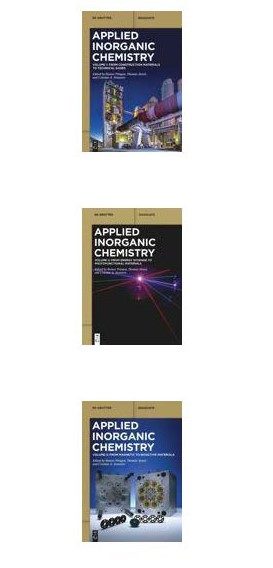Applied Inorganic Chemistry
Many elements and inorganic compounds play an extraordinary role in daily life for numerous applications, e. g., construction materials, inorganic pigments, inorganic coatings, steel, glass, technical gases, energy storage and conversion materials, fertilizers, homogeneous and heterogeneous catalysts, photofunctional materials, semiconductors, superconductors, soft- and hard magnets, technical ceramics, hard materials, or biomedical and bioactive materials.
The present book is written by experienced authors who give a comprehensive overview on the many chemical and physico-chemical aspects related to application of inorganic compounds and materials in order to introduce senior undergraduate and postgraduate students (chemists, physicists, materials scientists, engineers) into this broad field.
Über die zeit- und temperaturabhängige Photolumineszenz von Pr3+ und Gd3+ substituiertem Lu3Al5O12
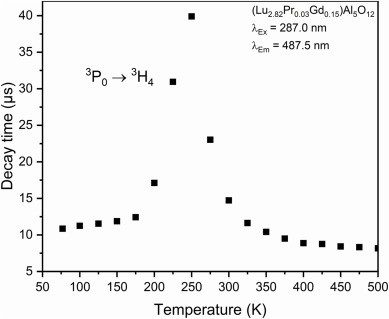
Die Arbeit behandelt den Energietransfer zwischen Gadolinium und Praseodym im Lu3Al5O12. Dazu wurde eine feste Lösung (Lu2,97-xPr0,03Gdx)Al5O12 (x = 0,003, 0,006, 0,015, 0,03, 0,06, 0,15, 0,3, 0,6) mittels Verbrennungsmethode dargestellt und in Bezug auf Phasenreinheit und Reflexions-eigenschaften hin untersucht. Ferner stellte sich heraus, dass die Emissionsintensität stark von der Gd3+-Konzentration abhängt. Weiterhin wurde der Energietransfer zwischen Praseodym und Gadolinium in (Lu2,82Pr0,03Gd0,15)Al5O12 durch Messung der zeit- und temperaturabhängigen Lumineszenz von 77 bis 500 K des 6P7/2 → 8S7/2- und 3P0 → 3H4-Übergangs von Gd3+ und Pr3+ untersucht. Es konnte herausgefunden werden, dass die Emissionsintensitäten und das Abklingverhalten von Gadolinium und Praseodym stark von der Temperatur abhängen.
Rare Earth Chemistry
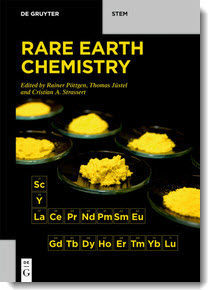
Die Seltenerdelemente spielten lange Zeit eine eher untergeordnete Rolle, sind aber heutzutage aus Wissenschaft und Technik nicht mehr wegzudenken. Dennoch gibt es kaum aktuelle und umfassende Lehrbücher zum Thema. Prof. T. Jüstel gibt nun zusammen mit den Profes. R. Pöttgen und Ch. Strassert (WWU Münster) ein englischsprachiges Buch zur Chemie der Seltenen Erden heraus. Die versammelten Autoren sind internationale Experten in diversen Gebieten der Seltenerdchemie und geben einen breiten Überblick über die verschiedenen Aspekte von der Grundlagenforschung bis zu anwendungsbezogenen Themen wie Wasserstoffspeicherung, Permanentmagnete oder LED-Leuchtstoffe. Von der FH Münster sind neben Prof. Thomas Jüstel auch Prof. Michael Bredol, Prof. Ulrich Kynast, Dr. Florian Baur und Patrick Pues als Autoren von insgesamt sechs Beiträgen vertreten. Das Buch richtet sich sowohl an Masteranden und Doktoranden als auch an industrielle Anwender. Rare Earth Chemistry De Gruyter 2020, 978-3-11-065360-1 Erschienen: 26. Oktober 2020
UVC-Emitting LuPO4:Pr3þ Nanoparticles Decrease Radiation Resistance of Hypoxic Cancer Cells
Radiation-resistant hypoxic tumor areas continue to present a major limitation for successful tumor treatment. To overcome this radiation resistance, an oxygen-independent treatment is proposed using UVC-emitting LuPO4:Pr3+ nanoparticles (NPs) and X rays. The uptake of the NPs as well as their effect on cell proliferation was investigated on A549 lung cancer cells by using inverted time-lapse microscopy and transmission electron microscopy. Furthermore, cytotoxicity of the combined treatment of X rays and LuPO4:Pr3+ NPs was assessed under normoxic and hypoxic conditions using the colony formation assay. Transmission electron microscopy (TEM) images showed no NP uptake after 3 h, whereas after 24 h incubation an uptake of NPs was documented. LuPO4:Pr3+ NPs alone caused a concentrationindependent cell growth delay within the first 60 h of incubation. The combined treatment with UVC-emitting NPs and X rays reduced the radiation resistance of hypoxic cells by a factor of two to the level of cells under normoxic condition. LuPO4:Pr3+ NPs cause an early growth delay but no cytotoxicity for the tested concentration. The combination of these NPs with X rays increases cytotoxicity of normoxic and hypoxic cancer cells. Hypoxic cells become sensitized to normoxic cell levels.
Characterization of Micro- and Nanoscale LuPO4:Pr3+,Nd3+ with Strong UV-C Emission to Reduce X-Ray Doses in Radiation Therapy
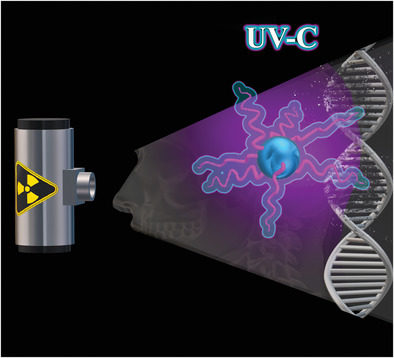
Red-Emitting K3HF2WO2F4:Mn4+ for Application in Warm-White Phosphor-Converted LEDs - Optical Properties and Magnetic Resonance Characterization
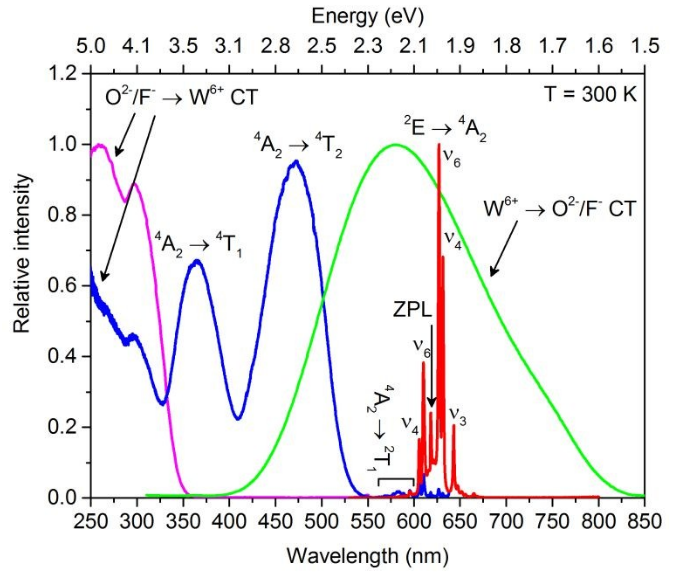
Deep Ultraviolet Emitting Scintillators for Biomedical Applications: The Hard Way of Downsizing LuPO4:Pr3+
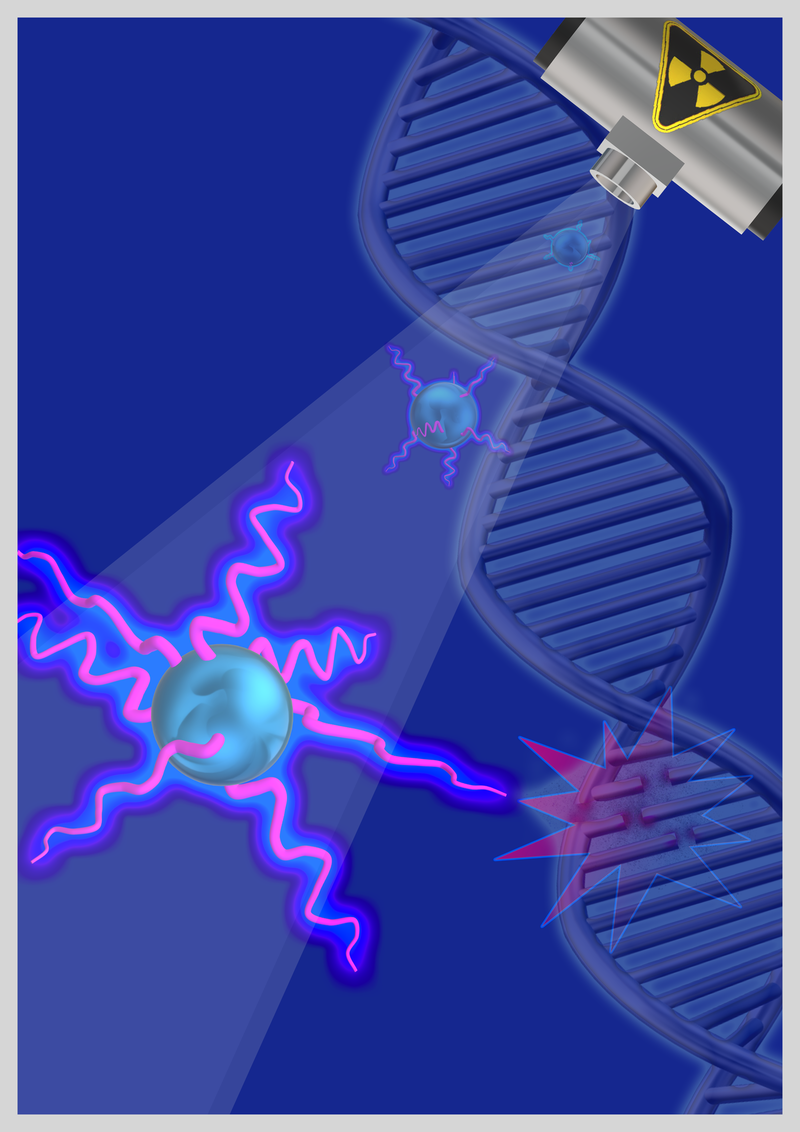
Bau einer warmweißen LED mit äußerst hohem Lumenäquivalent durch Verwendung des Uranyl- und Eu3+-haltigen roten Leuchtstoffes K4(UO2)Eu2(Ge2O7)2
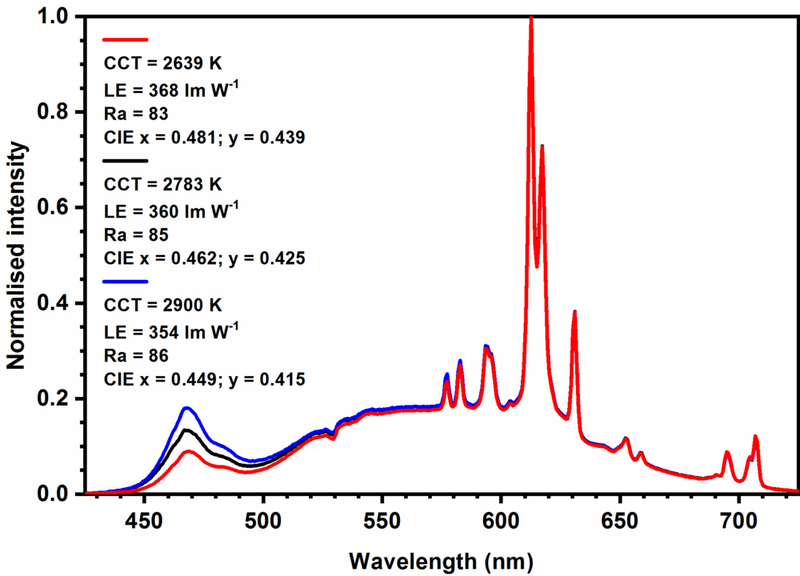
Narrow band red emitting phosphors have a great potential to boost the luminous efficacy of warm-white LEDs if their emission spectrum peaks between 610 - 630 nm and re-absorption of light emitted by the green to yellow LED phosphor, e.g. LuAG:Ce or YAG:Ce, is limited. Therefore, Eu3+ activated materials due fulfil these conditions, but their application is hampered by the very low absorption cross section in the near UV and particularly in the blue spectral range. Therefore, we investigated the sensitisation of the Eu3+ photoluminescence by uranyl cations in K4(UO2)Eu2(Ge2O7)2. While uranium is toxic and radioactive, the health hazard posed by depleted uranium is low as demonstrated by Sztajnkrycer and Otten [1].
It turned out that this approach yields a phosphor with a luminous efficacy of 260 lm Wopt-1 with a CIE1931 colour point of x = 0.647 and y = 0.349. For the first time a phosphor converted 2700 K (In,Ga)N LED comprising a Eu3+ activated phosphor as the red emitter has been reported. K4(UO2)Eu2(Ge2O7)2 enables a CRI of at least 85 with an impressive luminous efficacy of around 360 lm Wopt-1. The findings have been published in Journal of Materials Chemistry C [2].
[1] M. D. Sztajnkrycer and E. J. Otten, Chemical and Radiological Toxicity of Depleted Uranium, Mil. Med., 2004, 169, 212-216. DOI: 10.7205/MILMED.169.3.212
[2] F. Baur and T. Jüstel, Warm-White LED with Ultra High Luminous Efficacy due to Sensitisation of Eu3+ Photoluminescence by the Uranyl Moiety in K4(UO2)Eu2(Ge2O7)2, J. Mater. Chem. C, 2018, 6, 6966-6974. DOI: 10.1039/C8TC01970C
Rotemittierendes K2NbF7:Mn4+ und K2TaF7:Mn4+ für die Anwendung in warmweißen LEDs
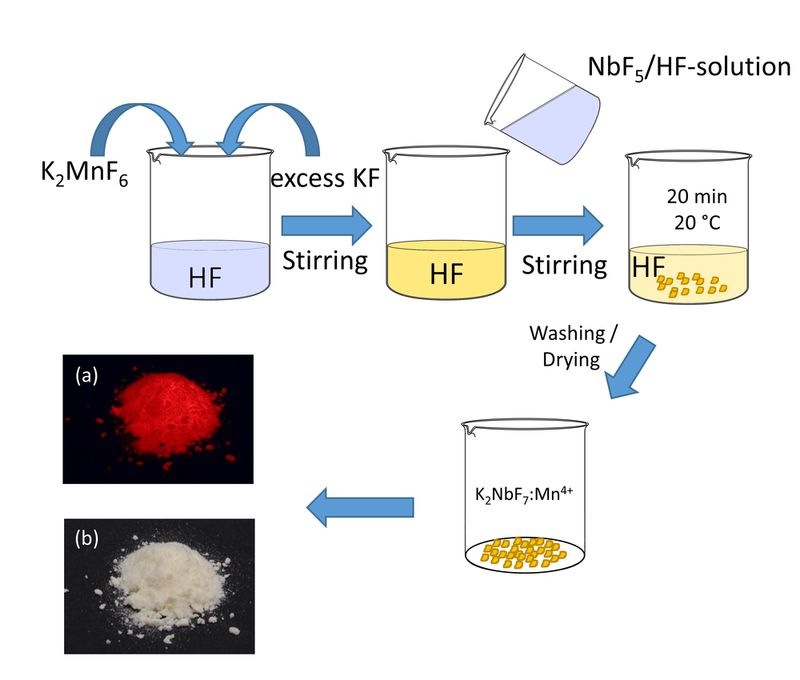
Schmalbandige tiefrote Photolumineszenz des inversen Granats Y2Mg3Ge3O12: Mn4+,Li+ für hochleistungs-leuchtstoffkonvertierte LEDs
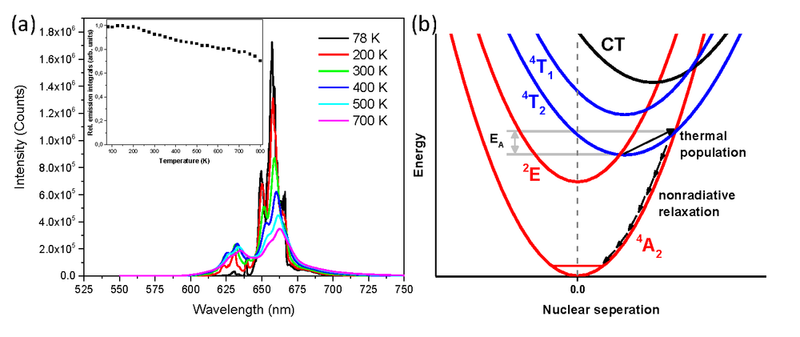
Kathodo- und Photolumineszenz von YPO4:Pr, Y2SiO5:Pr, YBO3:Pr und YPO4:Pr
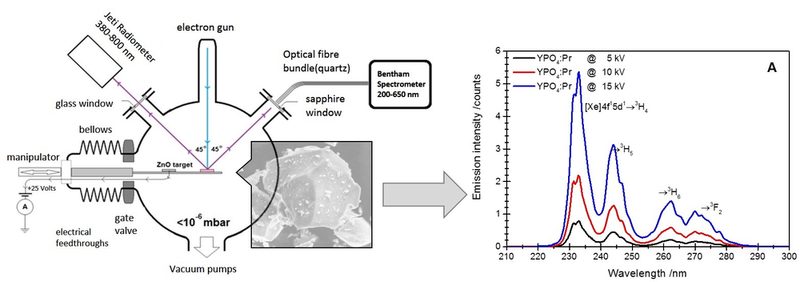
Neue UV-Reaktor gestützte Methode zur schützenden Al2O3 Beschichtung des UV-C emittierenden Leuchtstoffes YPO4:Bi3+ zur Verwendung in Xe-Excimer Lampen
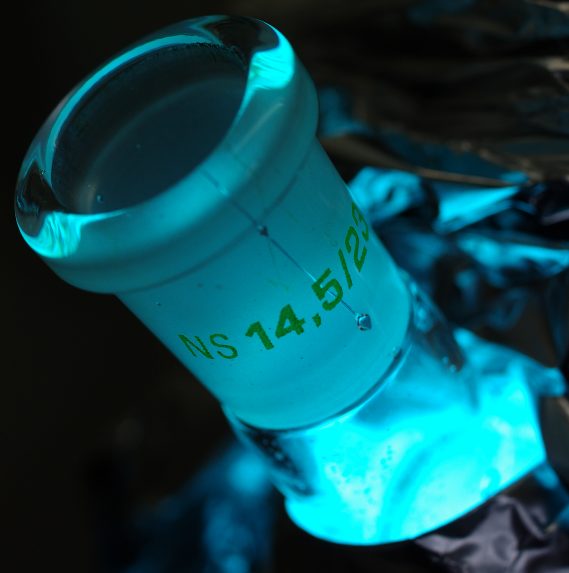
Mit Leuchtstoffen beschichtete UV-emittierende Xe-Excimer Lampen stellen eine effiziente und vor allem umweltfreundlichere Alternative zur den weit verbreiteten Quecksilberhaltigen Hg-Nieder- und Mitteldruckstrahlern da. Das Bi3+ dotierte Phosphat YPO4:Bi3+ ist ein für seine effizient bekannter UV-C emittierender Leuchtstoff, welcher in Form einer entsprechend Beschichteten Lampe unter anderem in der Desinfektion von wässrigen Medien eine wichtige Rolle spielen könnte. Das unter normalen Bedingen sehr stabile Phosphat unterliegt im Betrieb der Xe-Excimer Lampe durch den direkten Kontakt zum entstehenden Xe-Plasma jedoch einer starken Alterung. Um dieser entgegenzuwirken wurde ein neues UV-Reaktor gestütztes Beschichtungsverfahren entwickelt um schützendes Aluminiumoxid (Al2O3) direkt auf die Leuchtstoffpartikel aufzutragen.
Plenarvortrag von Prof. Dr. Thomas Jüstel bei den 16th Austrian Chemistry Days in Innsbruck
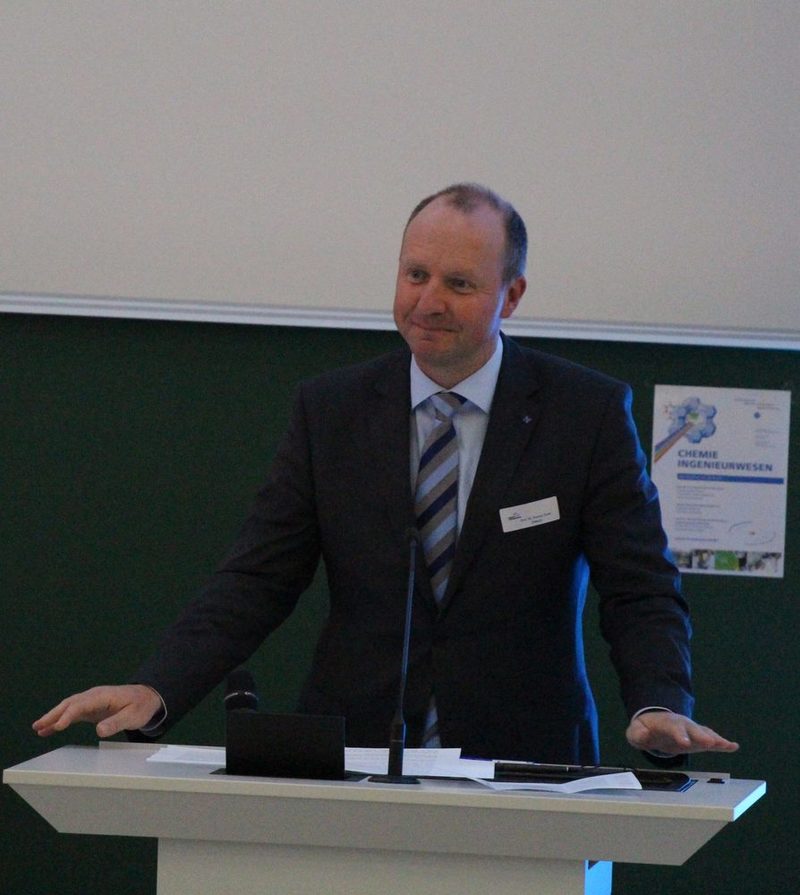
Im September 2015 wurde Prof. Dr. Thomas Jüstel als Plenarredner zu den "16th Austrian Chemistry Days" nach Innsbruck in Österreich eingeladen. Sein Vortrag mit dem Titel "Inorganic Luminescent Materials as the Basis of Highly Efficient Solid State Light Sources" beleuchtete den Stand der Technik bzgl. anorganischer Leuchtstoffe für lichtemittierende Dioden (LED) mit (In,Ga)N-Halbleitern als Primärlichtquelle. Im Rahmen des Vortrags wurden die physikochemischen Grundlagen von LED-Leuchtstoffen vorgestellt. Im Anschluss wurden die steigenden Anforderungen an für Hochleistungs-LED geeigneten Leuchtstoffmischungen aufgezeigt und daraus Empfehlungen für weitere R&D Aktivitäten in diesem Bereich diskutiert. Schließlich ging es um die zukünftigen Anwendungsgebiete von leuchtstoffkonvertierten LED jenseits der Beleuchtungstechnik und die sich daraus ergebenden Optionen für weitere Forschungsaktivitäten im Bereich anorganischer Leuchtstoffe.
Untersuchung der Photolumineszenzlinearität von Eu2+ aktivierten LED-Leuchtstoffen bei hoher Anregungsdichte
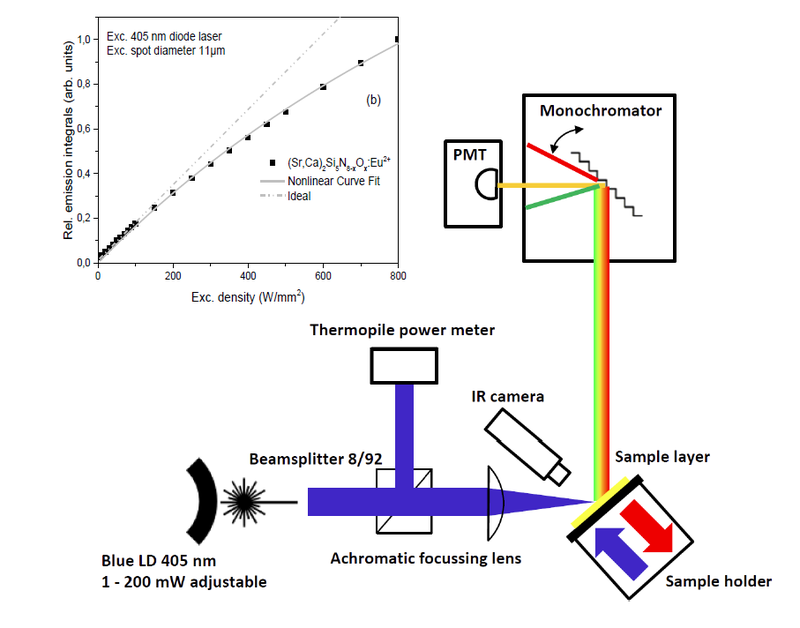
Diese Arbeit behandelt das Sättigungsverhalten von Eu2+ dotierten Lumineszenzpigmenten, welche bereits vielfach im Bereich der leuchtstoffkonvertierten LEDs Verwendung finden. Ebendiese haben, insbesondere bei hohen Anregungsdichten, wie es beispielsweise bei Laserdioden der Fall ist, generell ein hohes Potential für eine effiziente Lichtkonversion in der Festkörperbeleuchtung. Theoretische Überlegungen sagen ein lineares Ansprechverhalten von Eu2+ basierten Leuchtstoffen in einem Bereich von bis zu 1 kW/mm2 voraus. In der Praxis beobachtet man allerdings bedingt durch thermische Löschung und andere optische Effekte ein sublineares Verhalten der Lumineszenz, welches deutlich früher einsetzt, als theoretisch vorhergesagt. Es wurden exemplarisch (Ca,Ba)2SiO4:Eu2+ (OSE), Ba2Si5N8:Eu2+ (258:Eu) und CaAlSiN3:Eu2+ (CASN:Eu) ausgewählt, um das Ansprechverhalten mit steigender Anregungsdichte experimentell zu eruieren. Im Zuge dessen konnte für 258:Eu und CASN:Eu bereits bei geringeren Anregungsdichten ein signifikantes optisches Sättigungsverhalten unterhalb der theoretischen Grenzen gefunden werden, welches nicht mit den jeweiligen mittleren Abklingzeiten (~ 1 µs) der Lumineszenz in Einklang zu bringen ist. Es wird daher angenommen, dass der angeregte Zustand [Xe]4f65d1 von Eu2+ über das Leitungsband des Wirtsmaterials depopuliert wird und somit die maximale Pumpintensität limitiert. Im Zuge der Untersuchung zeigte sich dabei ein signifikanter Unterschied des optischen Ansprechverhaltens der betrachteten Leuchtstoffe. Dies könnte durch den relativen Energieabstand zwischen angeregtem Eu2+ und Leitungsband des Wirtsmaterials begründet sein. Abschließend wurde zur theoretischen Modellierung der Messergebnisse ein Ratenmodell herangezogen.
Warm-weiße LEDs mit deutlich gesteigerter Effizienz durch Einsatz von Tb2Mo3O12:Eu3+
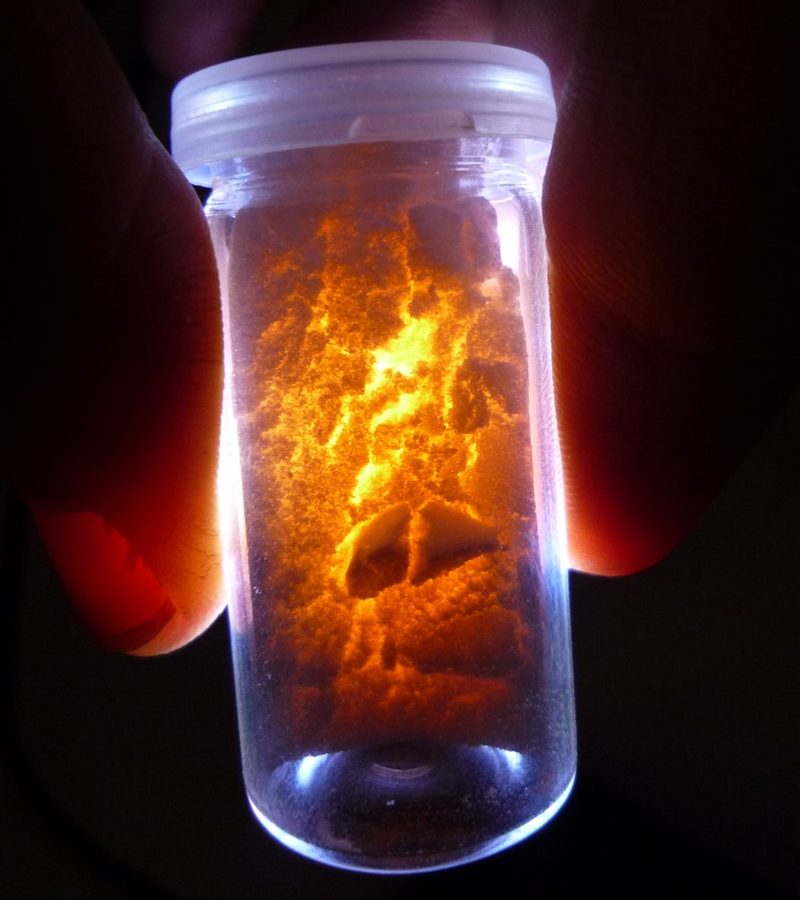
Damit sie in der Wohnraumbeleuchtung als vollwertiger Ersatz für Glühlampen dienen können, müssen LEDs neben einem gelb-emittierenden auch einen rot-emittierenden Leuchtstoff enthalten. Nur so wird eine warm-weiße Farbtemperatur erreicht. Gängige warm-weiße LEDs enthalten Leuchtstoffe, die nicht nur rotes Licht, sondern auch Infrarot (IR) abgeben. Da das menschliche Auge kein IR wahrnehmen kann, sinkt dadurch die Energieeffizienz. Eine Alternative stellen Leuchtstoffe mit dreiwertigem Europium dar, die kaum IR emittieren. Allerdings wandeln diese Leuchtstoffe nicht genug blaues Licht der LED in rotes Licht um. Durch den zusätzlichen Einbau von Terbium wurde die Konversion in rotes Licht deutlich gesteigert. Mittels einer Tb2Mo3O12:Eu3+ Keramik konnte die Emission einer 395 nm LED vollständig in rotes Licht umgewandelt werden.
Tiefrote Emission und Nachleuchten von SrSc2O4:Eu2+
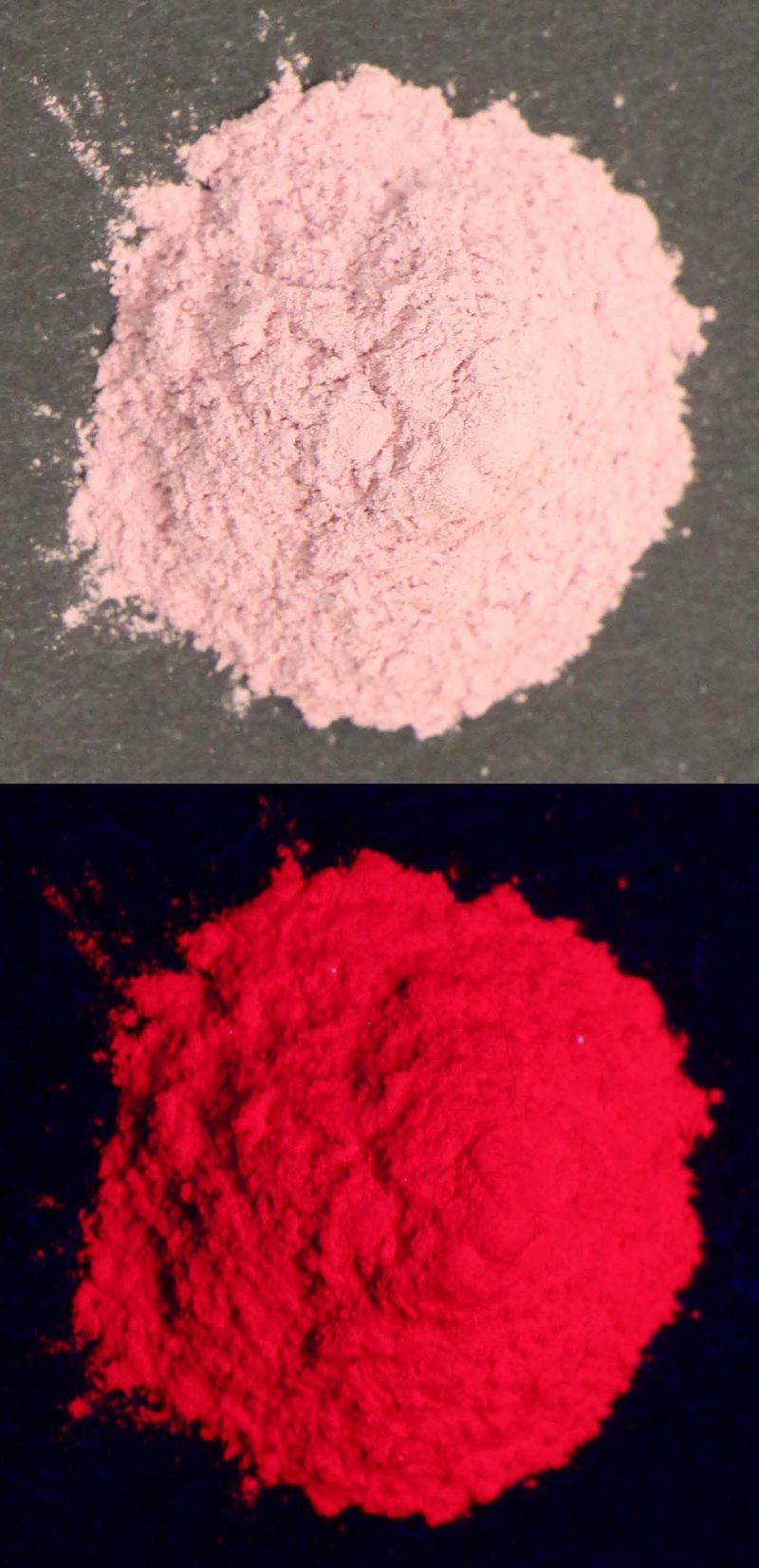
Obwohl Leuchtstoffe und Nachleuchtpigmente heutzutage allgegenwärtig sind, stellen rot emittierende Materialien jedoch nur eine kleine Gruppe dar. Besonders auf der Basis von zweiwertigem Europium als Aktivator in Oxiden sind nur wenige rot emittierenden Leuchtstoffe, und noch weniger nachleuchtende Pigmente bekannt. Durch Dotierung der anorganischen Verbindung Strontiumscandat mit zweiwertigen Europiumionen wurde ein tiefrot emittierender Leuchtstoff mit mehreren Stunden Nachleuchtdauer erhalten. Ein potentielles Anwendungsgebiet für tiefrot emittierende Leuchtstoffe ist die Allgemein- und insbesondere die Innenraumbeleuchtung. Auf Grund der Emission im roten Spektralbereich können Lichtquellen realisiert werden, welche eine ähnliche Lichtfarbe wie unsere vertrauten Glühlampen besitzen. Darüber hinaus sind tiefrot nachleuchtende Materialien für bildgebende Anwendungen in der Biologie von großer Bedeutung. Da tiefrote Strahlung die menschliche Haut passieren kann, stellt die Bildgebung mittels tiefroter Strahlung eine kostengünstige und gesundheitlich unbedenkliche Alternative zu den etablierten Verfahren, wie beispielsweise der Röntgendiagnostik, dar.



